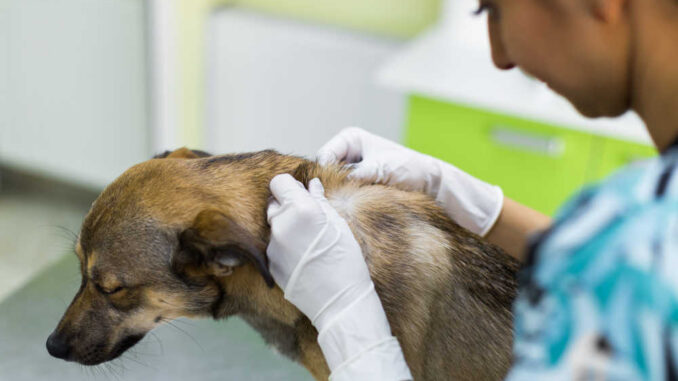
Many of us would have experienced the discomfort of ingrown hairs ourselves and we’d like to spare our dogs the pain that can be inflicted from it. Although ingrown hairs are less common in dogs than in people, they can sometimes occur. If they become infected they can cause discomfort and will often need veterinary attention. This article aims to provide comprehensive answers to common questions regarding ingrown hairs in dogs, helping both pet owners to assess their dog’s condition and to know when to seek professional advice.
What do ingrown hairs look like?
Ingrown hairs in dogs may appear as small, raised bumps on the skin, often resembling pimples or red dots. These bumps may be accompanied by localized hair loss or scaly patches. The can sometimes also form cysts. Below is a closeup picture of ingrown hair on human skin:
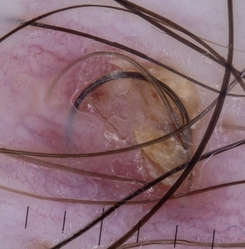
Ingrown hairs will often resolve themselves without the need for intervention.
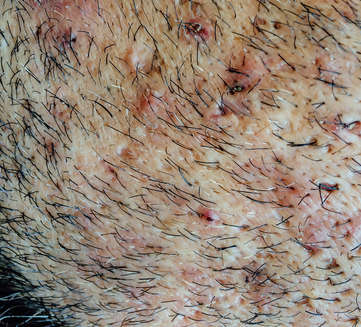
In some cases the bumps may become infected and can form abscesses and burst open. In this case, there may be a bloody or pus-like discharge from the area. Your dog may become preoccupied with licking the area. This image shows a ruptured abscess that may have been caused by an ingrown hair:
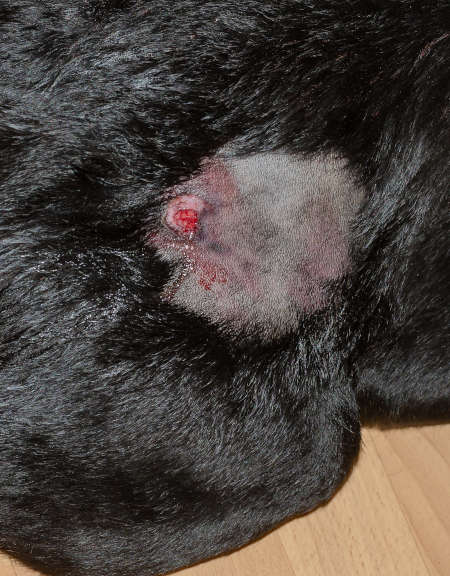
Are ingrown hairs painful to dogs?
In most cases, ingrown hairs will go unnoticed. But some dogs may experience itching, discomfort or tenderness in the area, particularly if they have become infected or if they have underlying sensitive skins or allergies.
Do ingrown hairs pose a threat to dogs?
In most cases, ingrown hairs in dogs do not pose a serious threat to their overall health. However, if left untreated, they can lead to secondary skin infections or more severe complications.
Ingrown hairs may be confused with other skin disorders or may be a symptom of other diseases such as Cushing’s disease. Any skin condition that does not improve with basic home treatment within 2-3 days, should be attended to by a vet. This will ensure that any underlying causes are treated and identified and will prevent unnecessary complications.
What causes ingrown hairs?
Ingrown hairs may develop after clipping of the hair, for example if the skin is clipped clean for a surgical procedure or if the pet is groomed quite short. Other medication conditions like allergies or skin inflammation that result in the dog licking or scratching a lot may result in ingrown hairs.
Giant breed dogs or dogs with thick fur between their toes may develop ingrown hairs between their toes from the pressure on the feet. This may lead to a condition known as interdigital cysts which can be quite difficult to manage.
Some medical conditions, e.g. Cushing’s disease and underactive thyroid gland (hypothyroidism) can change the skin’s health and hair growth patterns and may lead to ingrown hairs and blackheads (comedones).
Previous injuries or skin folds may also lead to ingrown hairs. Dogs with skin folds on their faces (e.g. Shar Peis) or screw tails (e.g. Boston Terriers and French Bulldogs) may develop ingrown hairs in those areas. Boston Terriers and other curly tailed dogs may get ingrown hairs in the area that is folded.
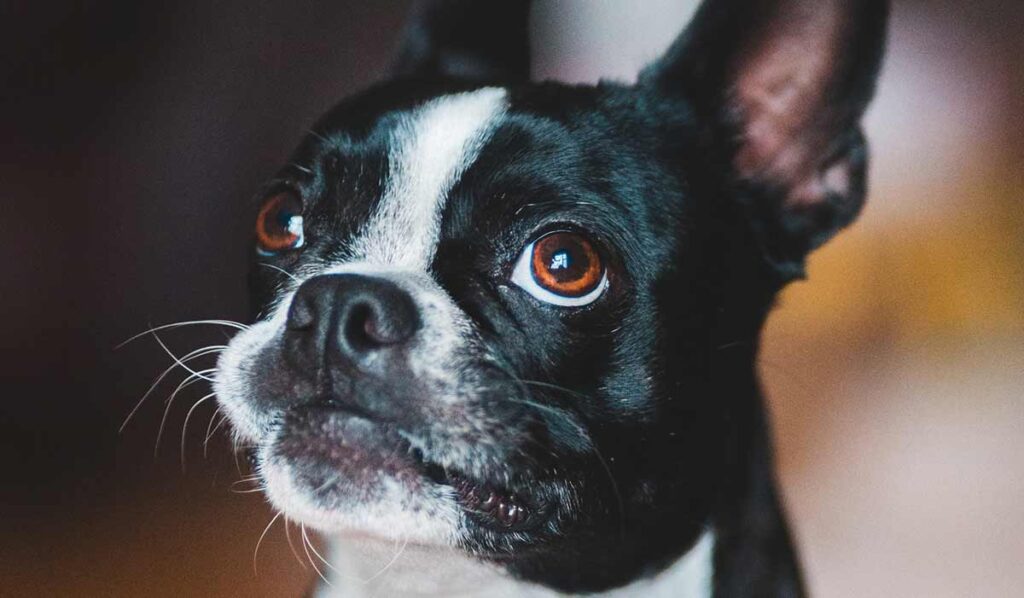
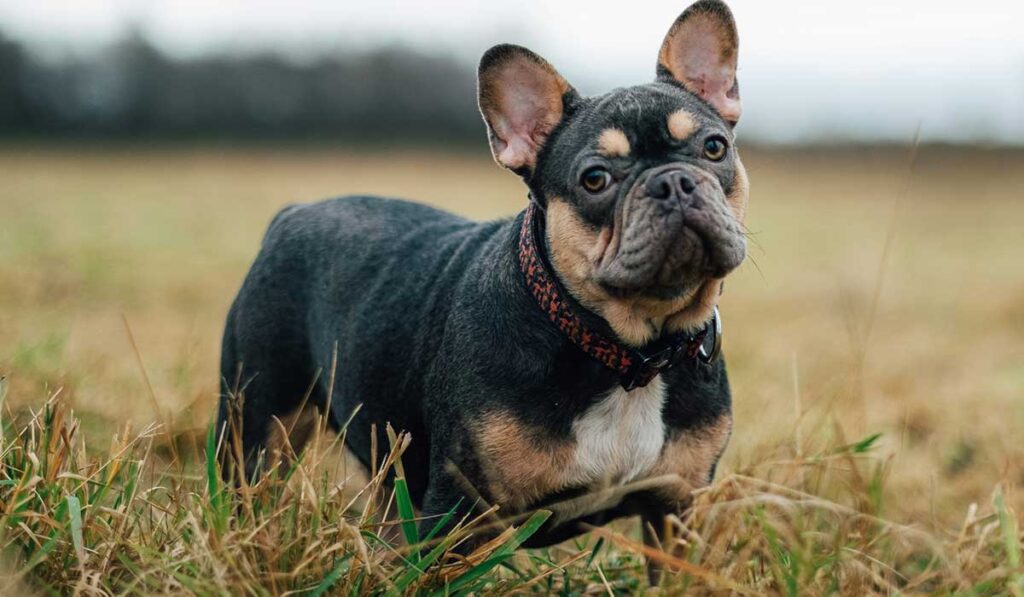
How can I prevent ingrown hairs?
Don’t ignore any skin condition. Seek veterinary advice early to prevent chronic changes to the skin which would predispose your dog to ingrown hairs.
Try to avoid clipping the coat too short and if your dog is prone to ingrown hairs, warn the vet about this if your pet may need clipping for a surgical procedure or blood collection.
Make sure any grooming equipment is clean and sanitized. Regular brushing will prevent matting of the hair coat and prevents ingrown hairs. Avoid using harsh shampoos or human products that strip the oils off your dog’s skin and don’t wash them too often.
If your dog has skin folds, be sure to clean this with a gentle dog shampoo and luke warm water 2-3 times a week to prevent infections and potential ingrown hairs.
Signs and symptoms of ingrown hairs
Common signs of ingrown hairs in dogs include redness, swelling, and small bumps on the skin. Hair loss or thinning may be observed around the affected area. Oozing or bloody discharge in the area may be noted. It is crucial to detect these symptoms early to prevent potential complications.
Regardless of the cause of a skin condition, most skin conditions will cause the same symptoms, namely redness, itching, and hair loss. This makes it quite difficult to ascertain the cause of your dog’s skin condition at home. Your vet needs to perform a number of tests to rule out the various skin conditions.
Thus, if your dog is showing symptoms of an ingrown hair, be aware that this may mimic several other skin conditions. It is important not to delay a vet visit if the symptoms don’t resolve within a few days of them starting.
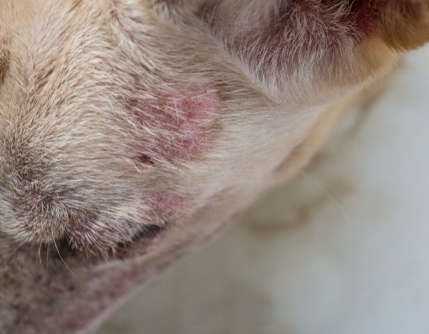
How do you know if something has to be done?
In most cases the ingrown hair will not need treatment and watchful waiting is all that is required. If your dog exhibits signs of discomfort, persistent itching, or if the ingrown hair becomes infected, it is recommended to seek veterinary help. A professional assessment will determine the appropriate course of action.
If your dog is unwell in any way or has a change in their habits and behaviours then it is best not to delay veterinary treatment.
Can I help my dog at home?
Initially the affected area can be cleaned with lukewarm water and a warm compress can be applied. Be sure to wrap the warm compress in a towel so that it does not make direct contact with the skin which could burn the dog.
If you notice that your dog is very uncomfortable or if the area has not improved within 2-3 days then veterinary assessment and treatment is required. Continued attempts to treat ingrown hairs at home without veterinary guidance may lead to further complications.
Treatment options for ingrown hairs in dogs
The vet will make a full assessment of the ingrown hair to provide the appropriate treatment. If it is a simple case, then they will most likely prescribe antibiotics or antibacterials and medication to control pain and inflammation. They may also remove the ingrown hair or the affected area of skin under sedation or general anaesthetic.
If allergies are suspected, then specific medication to control the symptoms of allergies will be prescribed.
In severe cases that have become large and deeply infected, sedation to clean and treat the area may be required. They may also have to investigate the area surgically to ensure that there is not another foreign object in the area.
If they suspect other underlying causes they may recommend diagnostic tests which may include blood tests and/or biopsies and culture of the area.
Differentiating ingrown hairs from other skin conditions in dogs
Distinguishing ingrown hairs from other skin conditions can be challenging. A veterinarian’s expertise is vital in accurately diagnosing the condition, as ingrown hairs can mimic other skin problems such as folliculitis or dermatitis. Parasitic infections, such as mange also need to be ruled out. Diagnostic tests or microscopic examinations may be necessary for an accurate diagnosis.
Ingrown hairs in dogs can cause pain and discomfort and can potentially lead to complications if left untreated. Your vet is your ally in treating your pet and ensuring that they receive prompt and appropriate treatment for their ailments. If your pet is unwell or showing discomfort or if the ingrown hair does not resolve with 2-3 days of home treatment, then a veterinary visit is essential.
Disclaimer: This website's content is not a substitute for veterinary care. Always consult with your veterinarian for healthcare decisions. Read More.

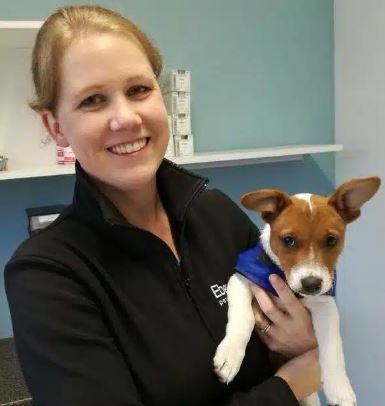
Be the first to comment